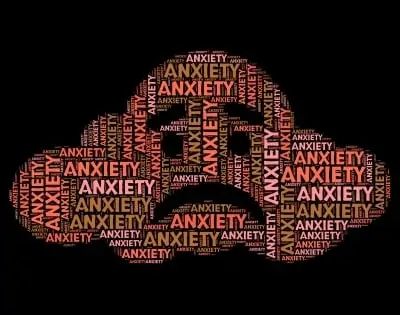
By simply being in a human body, we are vulnerable to countless sources of anxiety. Life is a journey of constant change and uncertainty. We can’t control events, and we don’t know what will happen next.
Anxiety is our nervous system’s natural response to perceived threats. Even if threats are not immediately present, anxiety may arise from past wounds that have not been allowed to heal or from a fear of unexpected changes in the future, such as loss or divorce.
The symptoms that arise can be short-term or long-term and may manifest long after the threat has disappeared. Those who are intimately acquainted with anxiety know just how debilitating it can be. Worries, large and small, build upon one another until life seems to become a constant, tiring process of managing fear and desperately striving to function normally.
Symptoms of Anxiety
Anxiety may manifest as:
- Hypervigilance: A state of sensory sensitivity which causes one to compulsively scan for danger, even when no threats are present.
- Difficulty concentrating: It becomes difficult to focus on present situations because one’s mind is obsessively worried about imagined scenarios.
- Anticipating the worst: One’s mind creates dreadful situations which often become expected, rather than purely hypothetical.
Physical symptoms of anxiety often include accelerated heartbeat, shortness of breath, muscle tension or shaking, a feeling of paralysis, insomnia, dizziness, upset stomach, and headaches. These responses are caused by the sympathetic nervous system’s preparation to fight, flee, or freeze in the face of a threat.
Ideally, one’s nervous system should be able to return to its resting state once a threat is no longer present – this would be normal resiliency.
However, in situations where the stress is ongoing with no clear end in sight, it is as if there’s an alarm in the nervous system that can’t be shut off. One begins to always prepare for danger, and it becomes very hard to find a way to relax and recuperate. Post-Traumatic Stress Disorder – or “PTSD” – often includes this type of chronic anxiety, as well as flashbacks, nightmares, withdrawal, and an inability to be present or functional in everyday life.
Healing Anxiety
There is relief for chronic anxiety! Exercise, meditation, cutting out obvious stressors, and eating better are all methods of self-help. In cases where anxiety is caused by a physical or chemical problem – such as thyroid disorder, hypoglycemia or asthma – properly prescribed medicine may be the best solution.
When anxiety is given space and attention, it reveals its message. When that message is fully acknowledged, it dissipates. For example, your anxiety may tell you that you need more rest, that something in your life is unsafe, that you have unfelt grief, or that you need to complete defensive reactions that were inhibited in a past threatening situation. Then, anxiety transforms into the positive qualities of excitement, curiosity, and creativity.
For anxiety that doesn’t go away, I recommend Somatic Experiencing, the work of Peter Levine. I am an advanced practitioner of Somatic Experiencing, which is an ideal method for working with chronic anxiety or stress.
Rather than trying to get rid of or avoid anxiety, I help you to explore it in a sensate way by bringing awareness of anxiety into your body instead of only paying attention to your mind’s obsessive thoughts and beliefs. As soon as the feeling of anxiety can be named and felt in the body in small, titrated amounts, the body’s organic movement towards deactivation starts to unfold. Then the anxiety can be safely discharged, and there is a tangible sense of your own innate relaxation response. This allows your nervous system to organically return to normal functioning and resiliency.

Recent Comments